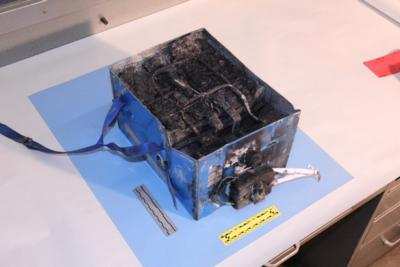Sat, Mar 02, 2013
Boeing Say Extensive Testing Will Be Required Before Airplane Is Flying Again
While FAA Administrator Michael Huerta says that Boeing's proposed solution to the battery issues that have grounded the fleet of Dreamliners worldwide "looks to be very comprehensive," he still can not speculate as to when the long-awaited airliners will be flying again.

Bloomberg Businessweek reports that Boeing head of commercial airplanes Ray Conner told reporters in Japan that the proposed fix is "permanent," and that batteries from GS Yuasa would still be incorporated into the airplane. He said that Boeing has not identified anything in the proposed solution that would indicate it is not "the appropriate thing to do. The solution set that we've put in place provides three layers of protection," he said.
In testimony before the House Transportation Aviation Subcommittee this week, Huerta said "with regard to the Boeing 787, we are working around the clock to conduct a comprehensive review of the critical systems of the aircraft, including the design, manufacture and assembly of the Dreamliner. As part of that review, we are working closely on a data-driven process to identify the cause of the recent battery issues and the mitigations for them.
"Last week, we met with senior executives from Boeing to discuss the status of ongoing work to address the 787 battery issues. We will carefully analyze Boeing’s proposal to address these issues. But the safety of the flying public is our top priority and we won’t allow the 787 to return to commercial service until we’re confident that any proposed solution has addressed the battery failure risks."
Huerta told the committee that the solution proposed by Boeing would first try to prevent the individual cells of the batteries from overheating. Should there be an overheating issue, the second layer is designed to keep that cell from causing a thermal runaway in an adjacent cell. Finally, the solution would prevent damage to the airplane should there be a complete battery failure.
Bloomberg reports that Japanese government officials who were not authorized to comment on GS Yuasa's activities said that the company recommended to the FAA that Boeing should also devise a system that would assure that the proper amount of power is being supplied to the batteries at all times.
The actual cause of the battery fire has not been determined.
(Image provided by the NTSB)
More News
Aero Linx: Aviators Code Initiative (ACI) Innovative tools advancing aviation safety and offering a vision of excellence for aviators. The ACI materials are for use by aviation pra>[...]
Make Sure You NEVER Miss A New Story From Aero-News Network Do you ever feel like you never see posts from a certain person or page on Facebook or Instagram? Here’s how you c>[...]
From 2016 (YouTube Edition): Who You Gonna Call When You Have a Rocket Engine that Needs a Spacecraft? While at EAA AirVenture 2016, ANN CEO and Editor-In-Chief, Jim Campbell, sat >[...]
"In my opinion, if this isn't an excessive fine, I don't know what is... The odds are good that we're gonna be seeking review in the United States Supreme Court. So we gotta muster>[...]
Expedite Used by ATC when prompt compliance is required to avoid the development of an imminent situation. Expedite climb/descent normally indicates to a pilot that the approximate>[...]
 ANN's Daily Aero-Linx (04.30.25)
ANN's Daily Aero-Linx (04.30.25) ANN FAQ: Turn On Post Notifications
ANN FAQ: Turn On Post Notifications Classic Aero-TV: Agile Aeros Jeff Greason--Disruptive Aerospace Innovations
Classic Aero-TV: Agile Aeros Jeff Greason--Disruptive Aerospace Innovations Aero-News: Quote of the Day (04.30.25)
Aero-News: Quote of the Day (04.30.25) ANN's Daily Aero-Term (04.30.25): Expedite
ANN's Daily Aero-Term (04.30.25): Expedite



